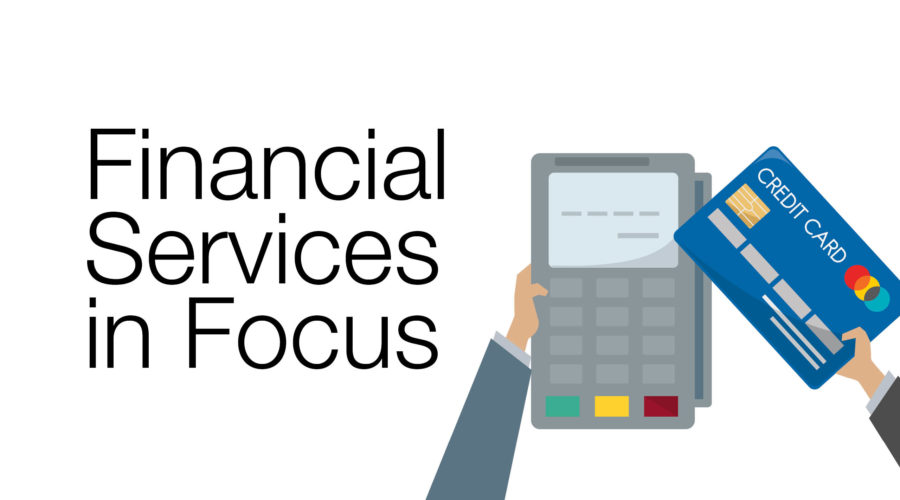ASIC releases consultation paper on fees and costs disclosure regime
On 8 January 2019, ASIC released a consultation paper on reforms to the fees and costs disclosure requirements for managed investment schemes and superannuation funds. The paper is in response to the independent reviewer’s report into the fees and costs disclosure regime under the Corporations Act 2001 as amended by ASIC Class Order [CO 14/1252] and as augmented by its regulatory guidance. In this article, we outline some key points of the consultation paper.
Key points
- ASIC has released its response to the independent reviewer’s report on the complexity of the current fees and costs disclosure regime.
- ASIC proposes to adopt a number of recommendations and to reject others.
- Key recommendations relate to:
- simplifying how fees and costs information is presented to consumers;
- reducing data inputs, including eliminating the disclosure of some cost categories, particularly property operating costs, borrowing costs and implicit costs; and
- making disclosure for managed investment schemes more consistent with superannuation fund disclosure.
- ASIC is consulting with industry and stakeholders on its proposals, which include a new draft regulatory guide and drafting amendments to the relevant regulations.
Background
The Corporations Act 2001 (and its regulations), as modified by ASIC Class Order [CO 14/1252], sets out the fees and costs disclosure regime for Product Disclosure Statements (PDSs) and periodic statements in respect of managed investment products and superannuation products. ASIC provides guidance on this regime in Regulatory Guide 97 Disclosing fees and costs in PDSs and periodic statements (RG 97) and in ‘questions and answers’ and other information on the ASIC website.
In July 2018, ASIC released the report by independent reviewer, Mr Darren McShane, in relation to the fees and costs disclosure regime for managed investment schemes and superannuation funds. The report is known as Report 581 Review of ASIC Regulatory Guide 97: Disclosing fees and costs in PDSs and periodic statements (REP 581). In our earlier article, we commented on some key recommendations of the independent reviewer in that report.
ASIC has provided its response to REP 581 by issuing the following documents for public consultation:
- Consultation Paper 308 Review of RG 97 Disclosing fees and costs in PDSs and periodic statements (CP 308);
- a draft updated Regulatory Guide 97 Disclosing fees and costs in PDSs and periodic statements (Updated RG 97); and
- proposed amendments to Schedule 10 to the Corporations Regulations 2001 (Draft Legislative Amendments).
ASIC’s response is not only to recommendations and observations in REP 581, but also encompasses other matters of which it has become aware as part of its industry consultation process.
ASIC says that, concurrently with the industry consultation, it will undertake consumer testing of some of its proposals and will share the conclusions from this testing.
Overview of ASIC’s response
In CP 308, ASIC provides its response to REP 581 by setting out the following:
- recommendations from REP 581 that it is proposing to adopt. Adopting these recommendations will require amendments to Schedule 10;
- recommendations from REP 581 that it is proposing to adopt and which do not require amendments to Schedule 10;
- recommendations and observations from REP 581 that ASIC does not propose to adopt at this stage; and
- ASIC’s further amendment proposals arising from industry consultation.
We attach a separate table here outlining these responses in more detail.
Key recommendations to be adopted
ASIC proposes to take forward key recommendations from REP 581 that relate to:
- simplifying how fees and costs information is presented to consumers;
- reducing data inputs, including eliminating the requirement for fees and costs disclosure to incorporate some cost categories, particularly property operating costs, borrowing costs and implicit costs; and
- making disclosure for managed investment schemes more consistent with superannuation.
Comments on the proposals
Our experience, and the experience of our clients, is that the current fees and costs regime has become overly complex and expensive for our clients to implement, without clearly achieving better consumer outcomes. In its media release, ASIC states that CP 308 ‘reflects ASIC's commitment to ensuring that consumers seeking information on fees and costs receive transparent and useable information that helps them understand fees and costs, compare products, and make confident and informed choices.’ It will remain to be seen whether this ambition is achieved, though it is no doubt shared by industry participants and consumers alike.
The removal of the requirement to disclose particular cost categories, such as property operating costs, borrowing costs and implicit costs, will reduce complexity. It may also lead to reduced compliance costs because, in our experience, issuers expend considerable resources on these complex areas.
While simplified, the fees and costs regime in Schedule 10 to the Corporations Regulations 2001 as proposed to be amended by the Draft Legislative Amendments will still remain as a detailed and complex disclosure regime. Current rules will be replaced with new rules. Such rules will require legal advice and will be subject to varying interpretation. This is not a criticism of ASIC, as any legislative regime is subject to these characteristics. The fees and costs regime was implemented by Parliament, and ASIC’s role is to use its powers to make that regime work as practicably and sensibly as possible, to achieve the desired consumer outcome.
Next steps
In releasing the consultation package, ASIC states that it seeks to ensure that the proposed fees and costs disclosure regime is practicable for industry.
ASIC is seeking comments on its consultation package by 2 April 2019. This unusually three-month long period of consultation in our view reflects not only ASIC’s commitment to seek broad industry consultation, but also the complexity of the fees and costs disclosure regime. A response to submissions on CP 308 and the conclusions from consumer testing is expected to be released in the second half of this year.
ASIC states that its focus in the meantime is to ensure that issuers are applying the current legislative requirements in good faith and are not trying to mislead consumers about fees and costs, and that ASIC will continue to monitor disclosure and advertising.
We will review the report in detail, be involved in industry working groups and advise clients accordingly. If you have any questions, please contact us.
Set out below is a table setting out the recommendations and observations in REP 581 that ASIC proposes to adopt and not adopt at this stage.
| Matter | Recommendations ASIC proposes to adopt that require amendments to Schedule 10 | |
| REP 581 recommendations | ASIC’s proposal | |
| Changing fees and costs template for superannuation products | Modify the ‘Fees and costs template’ for superannuation products to:
|
Modify the ‘Fees and costs template’ for superannuation products to:
|
| Changing fees and costs template’ for managed investment products | Modify the ‘Fees and costs template’ for managed investment products to:
|
Modify the ‘Fees and costs template’ for managed investment products to:
|
| Disclosing ‘Cost of Product’ information | Extend the ‘Example of annual fees and costs’ to all investment options by the calculation and disclosure of an abbreviated ‘Cost of Product’ figure.
For superannuation products, in the ‘Example of annual fees and costs’ and the abbreviated ‘Cost of Product’ calculation, incorporate a contribution of $5,000 on the last day of the period. |
Require ‘Cost of product information’ to be disclosed by:
|
| Simplifying periodic statements |
|
Amend the requirements for periodic statements for super and managed investment products, so they contain the following three lines:
|
| Transactional and operational costs treatment | Apply the treatment of transactional and operational costs set out in Chapter 7.3 of REP 581
Consider modifying RG97 and Schedule 10 to achieve certain outcomes in relation to transactional and operational costs. |
|
| Performance fee treatment | Consider modifying RG97 and Schedule 10 to achieve certain outcomes in relation to performance fees and performance-related fees. |
|
| Treatment of costs paid out of reserves | Clarify the definition of administration fees, particularly how it applies to fees deducted from members’ accounts, costs paid out of reserves and tax deductions related to those costs. | Amend the definitions of ‘investment fee’ (to be renamed’ investment fees and costs’) and ‘administration fee’ (to be renamed ‘administration fees and costs’) to make clear that costs met through the use of reserves are included. |
| Drafting amendment | Make drafting amendments to clauses 301 of Schedule 10 for clarity. | Make minor amendments to the structure of clause 301 of Schedule 10 to realign clause 301(2) with clause 301(1). |
| Matter | Recommendations ASIC proposes to adopt that do not require amendments to Schedule 10 | |
| REP 581 recommendations | ASIC’s proposal | |
| Consumer testing of some matters | Undertake consumer testing of:
|
Conduct consumer testing focussing on:
|
| Disseminating information and resources about the fees and costs regime |
|
Undertake further work to refine the consumer-facing narrative about the importance and relevance of fees and costs when making decisions about superannuation products and managed investment products. This may include producing information and educational material (including for MoneySmart) and working with industry (e.g. to develop consumer tools). |
| Working with industry on choice of product advice | Work with the industry bodies representing advisors to clarify how they should use fee disclosure when giving advice about choice of products. | ASIC will work with the industry bodies that represent advisers to clarify how fees and costs disclosure should be used when giving advice about choice of products. |
| Explain objectives an context of fees and costs regime | If the drafting of RG97 is to be revisited, an attempt should be made to set out more explanation of the objectives and the context of fees and costs disclosure so that the meaning is more accessible to users. | ASIC will explain the purposes and context of the fees and costs disclosure regime, so the intent of the regime is clear and the meaning is more accessible to users, as set out in Updated RG97. |
| ‘Fees and costs template’ of platforms | ASIC should work with industry to further improve consistency in the location and expression, in the ‘Fees and costs template’ of platforms, of the prominent statement that the fees and costs of the platform relate to access to the investments on the list, not the costs within those investments. |
|
| Treatment of amounts paid by third parties | Clarify in RG97 the principles relating to, and disclosure required for, payments of fees, costs and other amounts by third parties. | Include guidance in Updated RG97 to clarify the principles for and the treatment of fees, costs and other amounts paid by third parties or offset against other amounts. |
| Periodic statement content for defined benefit members | Special requirements should apply to the periodic statements of all defined benefit members regardless of whether the fund of which they are a member also has defined contribution members. | Include guidance in Updated RG97 on periodic statements for defined benefit superannuation entities, so that this guidance applies to any defined benefit member in a superannuation entity, instead of only to superannuation entities where all members are defined benefit members. |
| Consistency of information in fees and costs templates | Work with industry to improve consistency in the way that fee information is set out in ‘Fees and costs templates’. | ASIC will update RG97 to improve its guidance and will explore what other steps it and industry can take together to ensure fees and costs information is presented more consistently. |
| Reducing the differences between fee and cost disclosure for managed investment products and superannuation products | When making future changes to layout of the disclosure tools or the underlying data, ASIC should keep in view the subsidiary objective of reducing or eliminating the differences between fee and cost disclosure appearing in PDSs for managed investment products and superannuation products. | ASIC’s proposals in CP 308 will significantly reduce or eliminate the differences between fees and costs disclosure appearing in PDSs and periodic statements of managed investment products and those of superannuation products. |
| Make available a consolidated version of Schedule 10 | ASIC should make publicly available on its website a version of Schedule 10 that consolidates the amendments made by the various ASIC instruments. | Amend [CO 14/1252] to repeal and replace Schedule 10 in its entirety, so that Schedule 10 (as modified by [CO 14/1252]) is set out in a single document with a link being made available on the fees and costs section of ASIC’s website. |
| ASIC to develop and implement a surveillance strategy | ASIC should develop and implement a surveillance strategy on compliance with Schedule 10 disclosure requirements. | Develop and implement a surveillance strategy to assess compliance with the fees and costs disclosure requirements. |
| Matter | Recommendations and observations that ASIC does not propose to adopt at this stage | |
| REP 581 recommendations | ASIC’s response | |
| Conducting a feasibility study into a consumer comparison tool | ASIC should undertake a feasibility study into whether it, or another government agency could provide, or sponsor, the development of:
The feasibility study should also consider whether aggregated product or provider level cost data can be provided, outside of PDSs, to support consumers who make provider or product level choices. |
This task would require significant resources, so at this stage ASIC does not propose to undertake a feasibility study into whether ASIC or another government agency could provide this tool. In addition, the Productivity Commission’s Superannuation: Assessing Efficiency and Competitiveness inquiry may affect these recommendations.
|
| Platform disclosures | The ‘Fees and costs templates’ should be amended to accommodate platform disclosures. | These recommendations are a significant undertaking that would delay the implementation of the other proposals in CP 308. Additional guidance about platform disclosures is provided in Updated RG97. |
| Incorporation by reference consistency | ASIC should work with industry to improve consistency in the way that fee information is incorporated by reference particularly as regards cross referencing in the ‘Fees and costs template’, location and format of presentation. | No legal requirements or guidance will be provided at this stage, but ASIC will work with industry to improve consistency and the development of standards or best practice guidelines. |
| ‘Indirect cost ratio’ line item for superannuation products | If the line ‘Indirect cost ratio’ is retained as a separate line item in the superannuation ‘Fees and costs template’, the description of the line in clause 201 of Schedule 10 should be modified to ‘Indirect costs. | This is not relevant because ASIC proposes to remove the distinction between investment fees and indirect costs by merging the two items into a single line item. |
| Explaining transactional and operational costs within the context of information about returns | ASIC should give consideration to whether, and how, transactional and operational costs could be better explained to consumers within the context of information about returns. | Given the number of proposals in CP 308 that may affect disclosure of transactional and operational costs, ASIC does not believe it is the appropriate time to consider this recommendation. |
| Calculating and disclosing performance fees | ASIC should revisit the drafting of those parts of Schedule 10 and RG97 relating to the calculation and disclosure of performance fees to clarify the intention. | This is not relevant because ASIC is proposing to insert new provisions into Schedule 10, and guidance in Updated RG97, on performance fees. |
| Drafting amendment | Clause 303(2)(d) of Schedule 10 should be amended to clarify the drafting. | This is not necessary given the other proposed amendments to periodic statements. |
| Observations for the future | Certain short observations about the approach to disclosure of fees and charges in the longer-term are made in REP 581. | ASIC does not propose to address these observations. |
| ASIC’s additional proposals | ||
| Remove the indirect cost ratio concept entirely. | ||
| Maintain the status quo for the treatment of derivative financial products but align with other amendments regarding transaction costs. | ||
| Change the structure and content of RG97 (which is reflected in Updated RG97). | ||
| Make some minor drafting amendments to Schedule 10 to improve the clarity of the fees and costs disclosure requirements. | ||
Contact
You might be also interested in...

Financial Services | 17 Jan 2019
Financial Services in Focus – Issue 18
On 8 January, ASIC released a consultation paper on reforms to the fees and costs disclosure requirements for managed investment schemes and superannuation funds.

Financial Services | 17 Dec 2018
Financial Services in Focus – Issue 17
On 13 December, ASIC announced that it is concerned about recent control transactions where part or all of the consideration includes ‘stub-equity’ in Australian proprietary companies.






